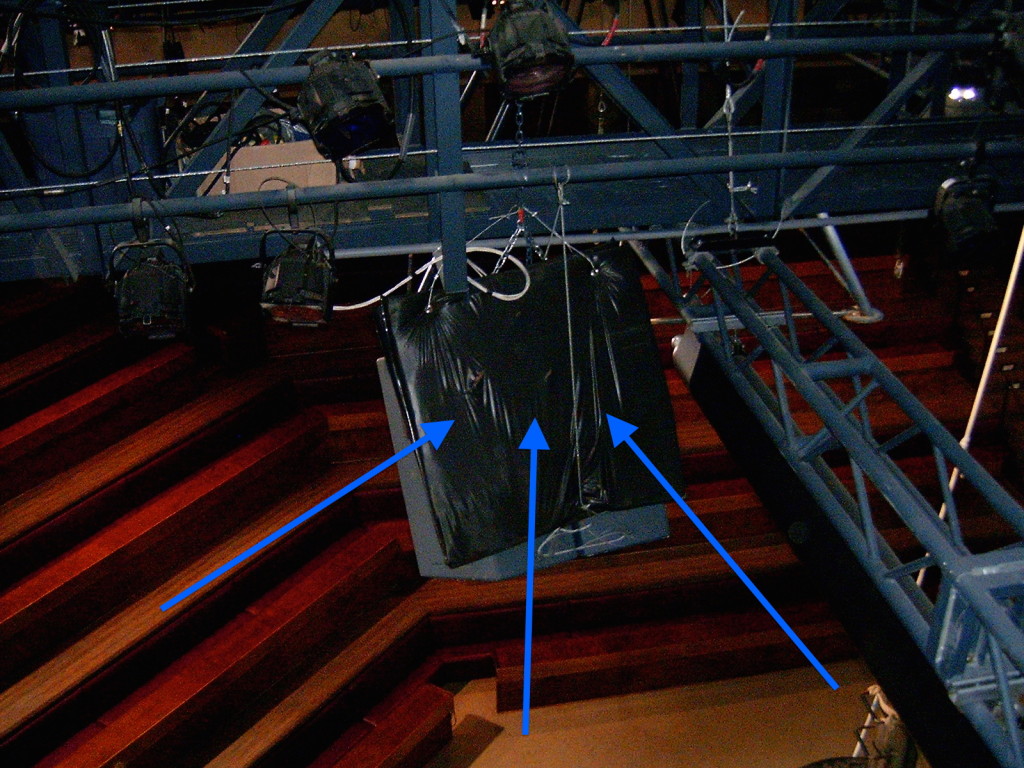I just came across some old install photos and thought I would share.
A while back I hung a new sound system at “Pirates Voyage” in Myrtle Beach South Carolina.
We replaced the existing EAW PA with a Meyer Sound rig designed and provided by Pro Sound out of their Orlando Florida office.
In reviewing the photos of the old rig, I was reminded of what appears to be “acoustic treatment” on the backsides of the EAW arrays.
I can only guess that someone was trying to reduce some of the low end / low mid content coming off the back of the cabinets. The thickness of the padding appears to be about 2 inches. I would argue that 2 inches of padding will cause zero reduction of any sound coming off the back of the cabinets as that sound would be omnidirectional anyway and completely ignore the padding. Whatever resonance was the culprit might of been better served by putting the padding on the inside of the cabinets.
If you want to know how a speaker will behave when it’s producing sound, tap on the sides of the speaker (any speaker / any side) with your knuckles. If it is relatively muted and of higher pitch, that suggests a well braced speaker. If you excite the walls of a speaker when you tap on them and it sounds like a drum, it will sound like that same drum at certain frequencies when it produces sound.
A perfect speaker cabinet wouldn’t vibrate at all. Think of a speaker cabinet being made of concrete. There are some home stereo speakers made of concrete but for professional applications, concrete speakers just don’t make any sense. Speaker design is a balancing act. Cost, weight, performance, etc… IF you brace a speaker cabinet correctly you don’t need to use concrete to get a relatively vibration free cabinet.
If you mount a speaker inside a structure that doesn’t vibrate at all, then all the energy of the speaker will be transferred into the air. Instead we settle for some cabinet vibration but you certainly don’t want cabinet resonances where the cabinet literally sings along. Inexpensive molded speakers typically make for hand good drums. The better the speaker, the better the cabinet design and bracing. Some inexpensive speakers are mounted in a wooden box with no bracing. That might as well be a hand drum. Speaker design is more than porting and cabinetry. A well designed cabinet lets the speaker does all the work.
There is a balance between light weight and good sound.


